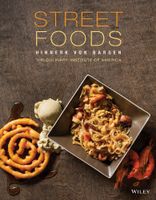Prue Leith's latest book is now on ckbk. Get 25% off ckbk Membership
Italy
By Hinnerk von Bargen and Culinary Institute of America
Published 2015
In Italy, eating is an integral part of life. The culinary arts are taken seriously, and traditional dishes, recipes, and methods are honored, respected, and preserved. Food is prepared and served sincerely, without much fluff. Simple but perfectly executed is a good way to describe the traditional cuisine. Fast food, while known, is not popular; even for street food, most people prefer to take a brief rest and sit down for a few moments to enjoy an espresso, a freshly fried arancini, or a gelato. The foods of Italy vary regionally. Northern Italy is famous for the locally grown rice, great wines, and truffles. In the alpine regions, dairy, and consequently beef and veal, is an integral part of the cuisine. Butter is a common cooking fat; olive oil, known and used all over Italy, is more popular in warmer regions. In general, the food of the north is richer, more elaborate, and more complex than the cuisines of the south. Cucina povera, which means “poor cuisine,” is often used to describe the rustic foods of central and southern Italy. The phrase describes a minimalist approach where chefs transform inexpensive and straightforward foods into great meals. Skillfully prepared, cucina povera shines through its simplicity, the quality of its elements, and the chef’s esteem for the ingredients.
Part of
Advertisement
Advertisement


